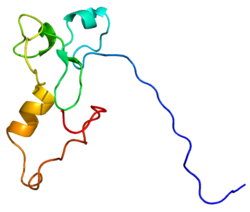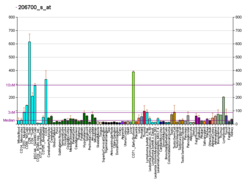Lysine-specific demethylase 5D is an enzyme that in humans is encoded by the KDM5D gene. [5] [6] [7] KDM5D belongs to the alpha-ketoglutarate-dependent hydroxylases superfamily.
Contents
This gene encodes a protein containing zinc finger domains. A short peptide derived from this protein is a minor histocompatibility antigen which can lead to graft rejection of male donor cells in a female recipient. [7]





